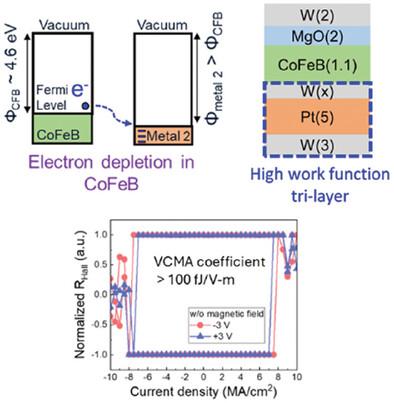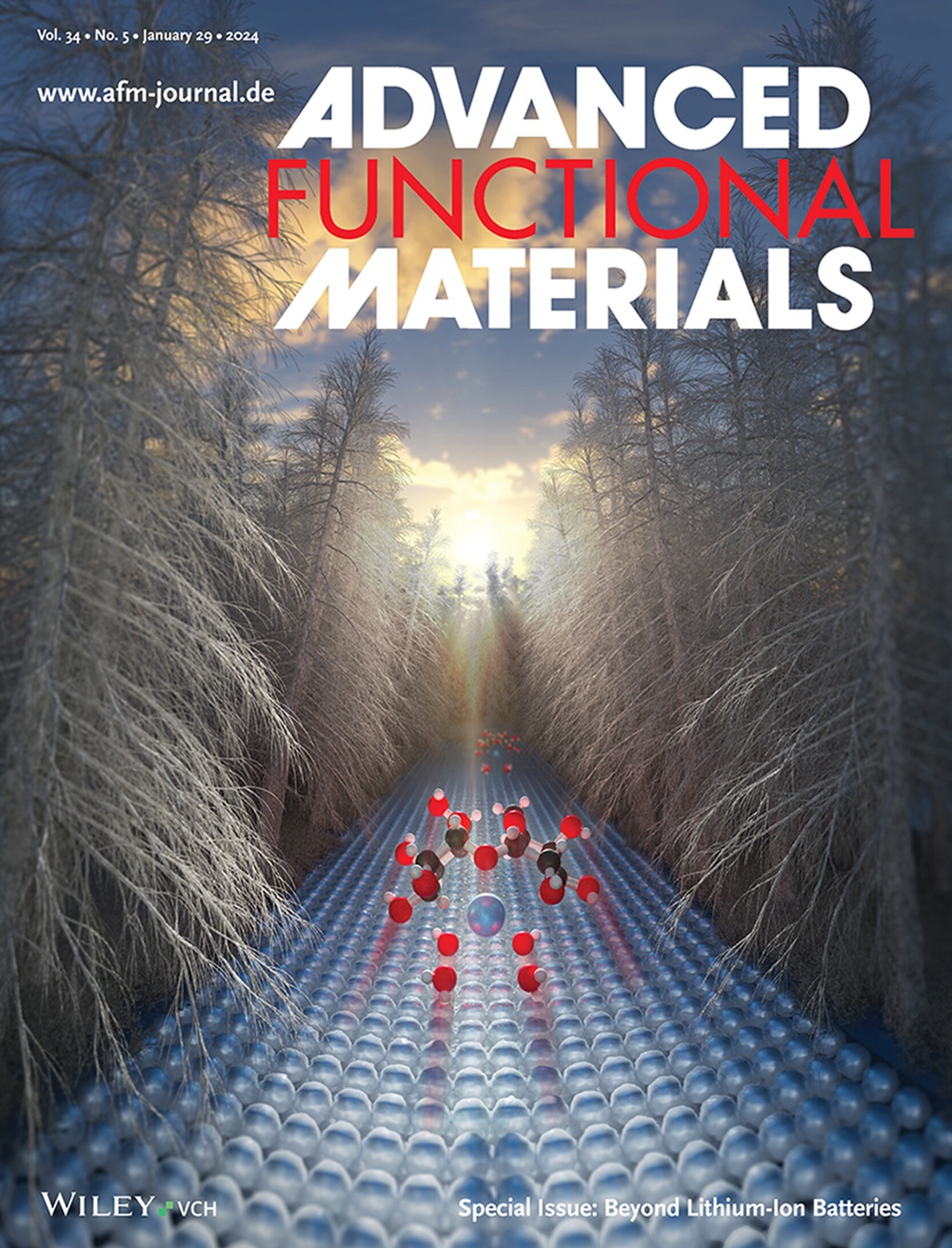Enhanced Voltage-Controlled Magnetic Anisotropy and Field-Free Magnetization Switching Achieved with High Work Function and Opposite Spin Hall Angles in W/Pt/W SOT Tri-Layers
IF 18.5
1区 材料科学
Q1 CHEMISTRY, MULTIDISCIPLINARY
引用次数: 0
Abstract
Voltage-Gated Spin-Orbit-Torque (VGSOT) Magnetic Random-Access Memory (MRAM) is a promising candidate for reducing writing energy and improving writing speed in emerging memory and in-memory computing applications. However, conventional Voltage Controlled Magnetic Anisotropy (VCMA) approaches are often inefficient due to the low VCMA coefficient at the CoFeB/MgO interface. Additionally, traditional heavy metal/perpendicular magnetic anisotropy (PMA) ferromagnet bilayers require an external magnetic field to overcome symmetry constraints and achieve deterministic SOT switching. Here, a novel and industry-compatible SOT underlayer for next-generation VGSOT MRAM by employing a composite heavy metal tri-layer with a high work function is presented. This approach achieves a VCMA coefficient exceeding 100 fJ V−1m−1 through electron depletion effects, which is ten times larger than that observed with a pure W underlayer. Furthermore, it is demonstrated that this composite heavy metal SOT underlayer facilitates the integration of VCMA with opposite spin Hall angles, enabling field-free SOT switching in industry-compatible PMA CoFeB/MgO systems.

在 W/Pt/W SOT 三层膜中利用高功函数和相反自旋霍尔角实现增强型电压控制磁各向异性和无磁场磁化切换
电压门控自旋轨道力矩(VGSOT)磁随机存取存储器(MRAM)是新兴存储器和内存计算应用中降低写入能耗和提高写入速度的理想选择。然而,由于 CoFeB/MgO 接口的压控磁各向异性 (VCMA) 系数较低,传统的压控磁各向异性 (VCMA) 方法往往效率不高。此外,传统的重金属/垂直磁各向异性(PMA)铁磁体双层膜需要外部磁场来克服对称性限制并实现确定性 SOT 开关。本文介绍了一种新颖且与工业兼容的 SOT 底层,该底层适用于下一代 VGSOT MRAM,采用了具有高功函数的复合重金属三层。这种方法通过电子耗尽效应实现了超过 100 fJ V-1m-1 的 VCMA 系数,是纯 W 底层的十倍。此外,研究还证明这种复合重金属 SOT 底层有助于集成具有相反自旋霍尔角的 VCMA,从而在工业兼容的 PMA CoFeB/MgO 系统中实现无场 SOT 开关。
本文章由计算机程序翻译,如有差异,请以英文原文为准。
求助全文
约1分钟内获得全文
求助全文
来源期刊

Advanced Functional Materials
工程技术-材料科学:综合
CiteScore
29.50
自引率
4.20%
发文量
2086
审稿时长
2.1 months
期刊介绍:
Firmly established as a top-tier materials science journal, Advanced Functional Materials reports breakthrough research in all aspects of materials science, including nanotechnology, chemistry, physics, and biology every week.
Advanced Functional Materials is known for its rapid and fair peer review, quality content, and high impact, making it the first choice of the international materials science community.
 求助内容:
求助内容: 应助结果提醒方式:
应助结果提醒方式:


